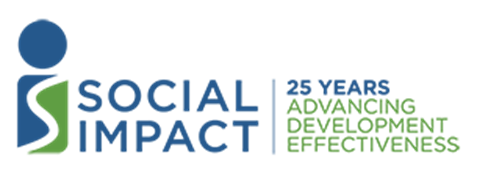

Impact Series: Combatting Online Sexual Exploitation of Children in the Philippines
By Paige Mason and Justin Archangel
The Problem
From 2010 to 2020, internet penetration in the Philippines grew explosively, from 25 percent to 50 percent of the population. While global connectivity has provided staggering benefits, the Philippines has also emerged in recent years as a hotspot for a related phenomenon—the Online Sexual Exploitation of Children (OSEC)--in which traffickers produce, possess, or facilitate visual depictions of sexual abuse of a minor. Often, OSEC is live-streamed and sold to foreign perpetrators. To bolster efforts to investigate, prosecute, and convict those perpetrating OSEC, the US Department of State (DoS) and the Government of the Philippines (GoPH) signed the Child Protection Compact (CPC) in April 2017.
Social Impact’s Findings and Recommendations
To assist the CPC in targeting its countertrafficking programming, Social Impact (SI) led a baseline study which identified gaps in case data collection, investigator coordination, and child trauma reduction measures. SI also assessed the extent to which CPC objectives were met and whether there were any observed changes in OSEC and child labor trafficking case handling. Both studies consisted of extensive desk review and secondary data analysis, along with key informant interviews and an online survey with actors fighting these crimes on the frontlines, such as law enforcement, social workers, prosecutors, and judges.
At baseline, SI’s team found that OSEC case reports were inconsistently directed to multiple law enforcement agencies and failed to collect specific information about the crime. The resulting duplication of efforts drained valuable resources and caused significant delays.
In response to the finding, SI recommended a universal triaging protocol for case referrals among all law enforcement agencies. The GoPH has since established the Philippines Internet Crimes against Children Center (PICACC) to provide a triaging function for the efficient assignment of OSEC cases, a direct link between foreign law enforcement, domestic anti-human-trafficking units, and police investigators. Since 2019, over 400 children have been rescued through PICACC operations.
SI also proposed case documentation standards requiring the age and sex of survivors and offenders, the type of trafficking, and region where it occurred. Numerous partners, including the national police, adopted this recommendation in recognition of the importance of richer data analysis of where OSEC cases occur, gender dynamics, and trends in OSEC investigation and prosecution.

A Closer Look: The Impact of Our Work
The evaluation team’s work helped instigate institutional change and contributed to more immediate, personal impacts where recommendations were utilized to improve the trial experience for OSEC survivors.
In previous OSEC trial systems, child survivors were required to testify live in court against the accused, often a close family member, which is a difficult and potentially re-traumatizing experience. SI’s baseline team recommended videotaped interviews as an alternative to live testimony. In response, and as part of their own child protective measures, International Justice Mission (IJM) supported 53 cases with 111 video interviews. Approximately 81 percent of these interviews were used pre-trial to establish probable cause for case filing, protecting 90 children from potential re-traumatization (IJM, 2020). By October 2021, the Philippine’s Inter-Agency Council Against Trafficking held a roundtable with high-level judges, lawyers, and lawmakers, discussing the potential institutionalization of video interviews.
At baseline, SI also recommended the use of interdisciplinary, hands-on training to increase the acceptance and use of digital evidence, which could substitute child testimony. IJM implemented these capacity-building methods in training over 250 prosecutors and law enforcement personnel on digital evidence collection, preservation, and presentation. One-third of legal professionals interviewed at endline shared that there is increasing use of digital evidence in lieu of survivor testimony. As these practices become more widely used, the burden of conviction may no longer rest upon the child survivors’ testimonies.
The CPC’s impact is sustained through the collaboration and continuous learning it supported with partners dedicated to improving their effectiveness in investigating and prosecuting perpetrators, protecting families, and supporting child survivors. The DoS Trafficking in Persons Office recognized the merits of pre-recorded video testimonies, stating, “the video evidence has been a factor in convincing/encouraging defendants, especially aunts, uncles, parents, to plead guilty and spare the child a court date and giving testimony against a loved one.”
By illuminating areas for improvement throughout OSEC case proceedings in the Philippines, SI’s CPC team contributed to national efforts to safeguard survivors of OSEC as their cases move through the justice system.
The work described in this Impact Story was performed by Social Impact in partnership with Encompass LLC.
Please see our related blog about our recent webinar titled, Using Evidence and Learning to Shine a Light on Modern Slavery – Participatory Evaluation Techniques, and recording of the full session.
Paige Mason acted as the senior evaluation specialist for the CPC Philippines baseline and endline evaluations. She specializes in program strategy, adaptive management, and counter-trafficking.
Justin Archangel is a Sr. Program Associate with Social Impact and served as a project manager for the US-PH CPC Partnership endline evaluation. He specializes in participatory techniques in program monitoring and evaluation, as well as digital transformation and workstream optimization.
Citations
IJM. (2020, May). Online Sexual Exploitation of Children in the Philippines: Analysis and Recommendations for Governments, Industry, and Civil Society [PDF]. Philippines: IJM.